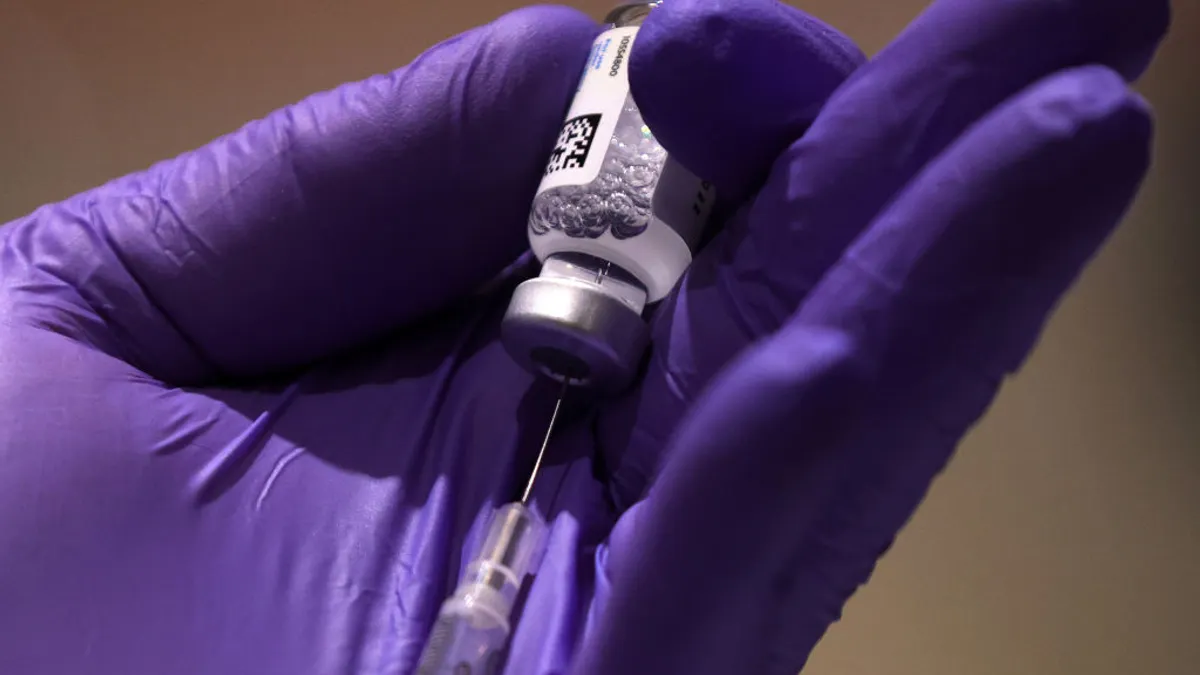Oncology has long been king in pharma, at least in terms of R&D and revenue dollars. But plenty of other therapeutic areas are hotbeds of competition.
Immunology remains an especially attractive field with drugs that can target multiple indications, widening patient reach. The therapeutic area has also given rise to a slew of blockbusters including Humira and Stelara, and accounted for over one-fifth of the bestselling 50 drugs last year.
Although vaccines haven’t always been a particularly lucrative business for pharma, the massive windfalls brought by COVID-19 reinforced the potential value of the space in times of need. But there are many ongoing vaccination gaps outside the context of a pandemic. The NIH estimates that RSV infections lead to 14,000 deaths each year for Americans over 65. And an intensifying race in the RSV space shows that infectious disease prevention can still reap blockbuster-level returns.
Here are three indications where the stage is set for increased competition among drugmakers.
Biologics vie for a spot in the COPD arena
Sanofi and Regeneron’s blockbuster anti-inflammatory med Dupixent is on the upswing. Last year, sales for the drug, which has scored FDA nods for five indications including atopic dermatitis and asthma, soared 33% last year to over $11 billion.
Now, the companies are waiting for word from the FDA about a potential new approval for COPD patients with Type 2 inflammation. The expanded indication would make Dupixent the first biologic approved to treat the condition, and potentially lift it towards the $20 billion mark by the end of the decade, according to analysts.
But the companies may not have the market to themselves for long.
Earlier this week, AstraZeneca and Amgen unveiled phase 2a data for their asthma medication Tezspire in COPD. Although Tezspire missed the trial’s primary endpoint, the biologic signaled potential efficacy in specific COPD subpopulations. And if the results hold up in a planned phase 3 trial, Tezspire, which pulled in $653 million in sales for the companies last year, could be more effective than Dupixent for those patients.
The FDA was slated to decide Dupixent’s fate in COPD June 27, but in a first quarter earning’s call, Regeneron’s CEO, Len Schleifer, said the agency has requested additional information related to patient subgroups, which could delay the decision by up to three months.
A three-way RSV showdown
GSK and Pfizer have been duking it out in the RSV vaccine space since last year when both companies won milestone approvals for their shots. The FDA in early May gave the first-ever approval to GSK’s RSV vaccine Arexvy. Weeks later, Pfizer’s Abrysvo won a regulatory go-ahead as well.
So far, GSK’s vaccine has fared better on the market, surpassing the blockbuster threshold in its first year with $1.5 billion in sales. Pfizer’s shot generated $890 million in 2023. This year, GSK still has a slight edge. The company reported about $227 million in first-quarter sales for Arexvy, while Pfizer reported Abrysvo raked in $145 million in global revenues.
To keep momentum, the companies have been studying their RSV vaccines in younger populations (both shots have been OK’d for adults 60 and over) with the aim of winning expanded approvals. But even if they widen the market reach, incoming competition from Moderna could tee up a more complex RSV battle.
The FDA was expected to render a decision on Moderna’s RSV vaccine, called mRNA-1345, May 12. But days ahead of that scheduled decision, the company reported the FDA delayed its verdict until late May due to “administrative constraints.”
If the vaccine is approved, Moderna is banking on prefilled syringes, which make administration easier, to give the shot an edge over Pfizer and GSK. The company also expects the CDC to determine that its shot is equal to its rivals, which could help drive interest in the new mRNA jab.
After launch, analysts predict the Moderna vaccine will pull in about $166.7 million this year, according to Reuters.
A Big Pharma rivalry in ulcerative colitis
Eli Lilly’s Omvoh became the first IL-23 blocker to hit the ulcerative colitis market last October, and Big Pharma competitors are already hot on its trail.
Earlier this week, J&J published positive results from a phase 3 UC trial of the IL-23 drug Tremfya, which is indicated for plaque psoriasis and active psoriatic arthritis.
J&J filed a BLA for UC and Crohn’s disease in March. The latest study results helped solidify clinical evidence for Tremfya by showing the drug was effective as a maintenance therapy.
The study also suggested Tremfya could work slightly better than Skyrizi, which AbbVie is hoping to expand into UC. The company published trial results for the blockbuster med as a maintenance therapy in UC last year and filed for a label expansion.




















